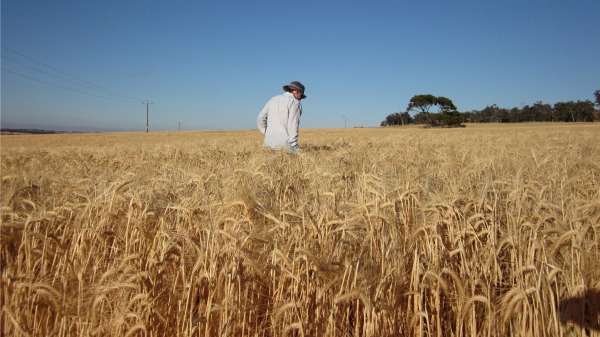Emerging weeds show resilience to herbicide treatments

With herbicide resistance in common weeds already impacting significantly on the WA grain industry's profitability, evidence has now been found of resistance issues in lesser-known and emerging weeds.
Resistance in ryegrass (Lolium rigidum) and wild radish (Raphanus raphanistrum) has been historically well documented, but a benchmark study by the Australian Herbicide Resistance Initiative (AHRI) for emerging weed species has identified the problem is far more widespread than originally thought.
Weeds such as brome grass (Bromus) and barley grass (Hordeum spp) were among the emerging weeds counted for both population frequency across the Wheatbelt and herbicide resistance.
Of the 466 paddocks sampled, 37 per cent contained the annual grass weed Bromus and 26 per cent contained Hordeum spp.
In the 91 identified populations of Bromus, 12 populations were resistant to acetolactate synthase-inhibiting sulfonylurea (Group B) herbicides and one population resistant to the cetyl-coenzyme A carboxylase-inhibiting (Group A) herbicides.
Forty-seven populations of Hordeum spp were collected during the study, with eight per cent resistant to the sulfonylurea herbicide sulfosulfuron (Group B), some with cross-resistance to the imidazolinone herbicides.
AHRI senior research officer Mechelle Owen says the study will provide benchmark data for future research into these weed species across WA.
She says herbicide resistance in weeds is a major cost impost on WA's agricultural industry.
Ryegrass still the main problem
The study supported previous research demonstrating the magnitude of resistance issues facing farmers, she says.
"We've been aware that resistance is out there for these species, but this is the first time that the population numbers and resistance percentages have been documented," she says.
"We've had reports of both Bromus and Hordeum becoming more of a problem in certain areas but these species aren't as widespread in their geographic distribution as ryegrass."
Ms Owen says it is critical for farmers to consider an integrated weeds seeds management strategy.
"Its important for farmers to look at other weed control options such as cutting crops for hay, stubble burning, seed crushing, to name just a few, so they are not reliant on herbicides to combat weeds," she says.
The survey was undertaken in 2010 with the results published in April this year.
AHRI will conduct further surveys in coming years to determine if herbicide resistance in both Bromus and Hordeum spp is increasing.
A recent Grains Research and Development Corporation survey estimated the cost impost of weeds on Australia's agricultural industry was almost $3.3 billion annually.
Provided by Science Network WA



















